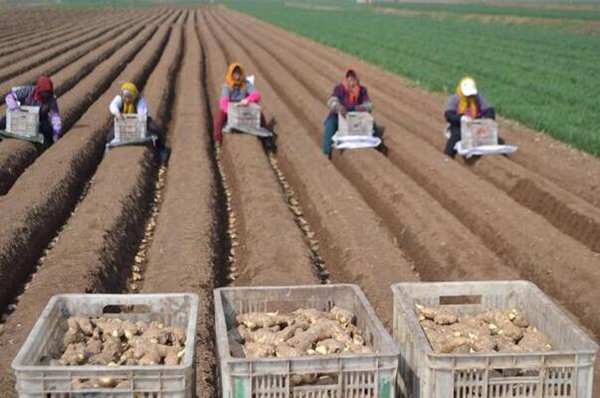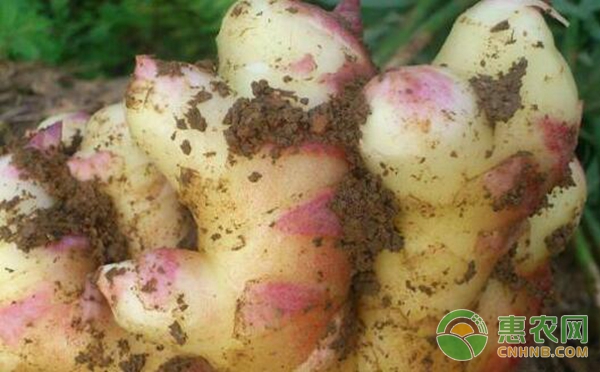Twenty years of experience in ginger farming: Key points for high quality and high yield planting management of Ginger
Ginger can be said to be an indispensable seasoning vegetable in our life. The high-quality ginger can bring rich profits to the growers. However, due to many years of repeated cropping, unreasonable fertilization, drug use, blindly smoked land, and too shallow arable land, the cause of soil compaction and geological deterioration has occurred. In recent years, geranium root-burning seedlings, frequent pests and diseases, reduced yield, and reduced quality Waiting for a series of questions, the majority of the ginger farmers are suffering. So is there a good way to solve these ginger problems? Is there any quality management method for ginger? Lao Cui is the most famous ginger grower in the region. The ginger he grows has the highest annual output, the best quality and the highest selling price. In his more than 20 years of ginger cultivation, almost all of the problems of large ginger cultivation have gone through it all over the place, but he has also successfully summed up a set of management techniques of high-quality and high-yield ginger, which has become a veritable name nearby. "Ginger expert". As for his own experience in planting ginger, as long as someone comes to ask for advice, he is selfless to answer and share, so it also has a good popularity. According to him, in order to plant a good ginger, it is necessary to master the nature and habits of the ginger, and do a good job in the management of all aspects of planting. First, in order to ensure the high-quality production of ginger, it is necessary to adhere to the principle of organic fertilizer, chemical fertilizer, microbial fertilizer and soil improver; Second, we must choose deep soil layers, fertile soil, good irrigation and drainage conditions, and acid or neutral sandy soil for ginger fields; 3. Before the winter, remove the weeds, straws and roots of the ginger field in time, apply 4000-5000 kg of organic fertilizer per acre, and turn 35-40 cm deep, and freeze the sun; Fourth, do not apply livestock and poultry manure, especially raw chicken manure, because raw chicken manure is the main cause of pests such as ginger, ginger, rotten root, molting, ginger and so on. In the main points of planting management in all stages of ginger planting, Lao Cui also gave a detailed explanation. First, the ginger stage. It is necessary to select the ginger ball and the ginger ball which are ginger, obese, tightly-colored, skin-shiny, disease-free, harmless, and unfrozen. The size of the seed is 60-80 grams, generally The amount of seed per acre is 300-400 kg. Before planting ginger, remove the selected ginger species, wash the soil with water, knead it into small pieces, and soak the seeds on a sunny day with high temperature. Usually take it out at 9:00 in the morning and take it back at 3 in the afternoon. day. In addition, in the process of drying the ginger, the browning, blackening and softening of the ginger pieces should be picked out and eliminated; in the case of the sleepy species, the ginger after drying should be piled indoors, covered with straw curtains or quilts, stuffy Put 3-4 days to promote the internal nutrient conversion of ginger. Second, the germination stage. The germination maintains a humidity of 80%-85%, and the humidity is easy to take root, which will seriously reduce the yield. Germination period, 5-7 days in the early stage, 22-24 °C, 15 days in the middle, 25-27 °C, 7-10 days later, 20-22 °C. When the ginger bud grows to 1 to 1.5 cm, the ginger buds are selected, and only one strong bud is left for each ginger. The rest are all erased, the temperature is controlled to 16-18 ° C, and then planted according to the size of the ginger seed; The groove spacing should be kept at 65-70 cm, the groove depth is 28-30 cm, and the ridges are formed into a trapezoidal shape, which is pressed and pressed tightly. Third, the planting stage. The mulching film is cultivated before and after the “Guyuâ€. The best period for the cultivation of the large arch shed is before and after the “Spring Equinoxâ€. The small arch shed is cultivated before and after the “Qingmingâ€; the planting density of common ginger (Ginger) is 6500-7500 plants/mu, and the plant spacing is 16- 18 cm, fat ginger (large meat or ginger) planting density 5000-5500 plants / acre, plant spacing 18-20 cm. Fourth, the fertilization stage. 100-120 kg of bio-organic fertilizer per acre, 25 kg of phosphorus nitrate or general compound fertilizer, 20-30 kg of medium and trace element fertilizer, and 2 kg of deep tillage. Before fertilizing, the various fertilizers should be mixed evenly, and then evenly spread into the ginger ditch. Finally, the fertilizer is mixed with the soil, and watering should be done before planting. The first time to topdress. When the seedling height is 30 cm and it has 1-2 small branches, it is called "small top dressing" or "promoting seedling fertilizer". If the sowing date is earlier and the seedling period is longer, it can be fertilized 2-3 times with watering, and the amount of fertilizer applied is the same as above. The second topdressing. Before and after the fall of the autumn combined with Jiangtian weeding, this time called "big top dressing" or "turning fat." This top dressing plays an important role in promoting hair growth and rhizome enlargement. The third top dressing. In the first ten days of September, when Jiang Miao has 6-8 branches, it is called “supplemented fertilizer†or “strong ginger fertilizerâ€, which has a significant effect on the rapid expansion of rhizome. Jiangtian, which has a weaker or growing body, and Jiangtian, which has poor soil fertility, can be applied to quick-acting fertilizers, especially potassium and nitrogen fertilizers, to ensure the nutrients needed for root growth. Fifth, field management. Pre-management: Before the soil is unearthed, the ginger seedlings should be inspected in the field. If the film is damaged or blown by the wind, it should be sealed in time. Generally, there is no need to water the water. If the ginger ditch is very dry, a small amount of water can be poured. . After the seedlings are out, the sunshade net should be set up, and the amino acid or peptide nutrient water should be applied to the fertilizer. The emulsion should be washed again every half month, and the dosage should be 15-20 kg each time. When watering, it should be poured to keep the ginger ridge moist; when the temperature under the film is higher than 28 °C, it should be ventilated and cooled. Use ginger mulch covered with small arch shed or plastic film. When the ginger seedling grows 5-10 cm away from the membrane, it is necessary to open the hole to release the seedlings to avoid the occurrence of roasted ginger seedlings. When the temperature is stable at 20 °C, the film should be removed immediately. Prevention and control of ginger mites, ginger mites and ginger mites; during the vigorous growth period, it is necessary to combine 60-80 kg of bio-organic fertilizer per acre with 20-kilogram of special-purpose compound fertilizer, and then apply it once in half a month. The amount is the same as when the ridge is broken. When fertilizing, avoid mixing the fertilizer with the soil and water it immediately after fertilization. Mid-term management: remove the shade before and after the fall, spray medicine to prevent disease, fertilize soil, apply 60-80 kg of bio-organic fertilizer per mu, special-type compound fertilizer 100-150 kg, medium and trace elements 20-30 kg, interval three weeks The soil is fertilized again and left, applying 40-60 kg of potassium sulfate per mu, and 40-60 kg of special-purpose compound fertilizer. It should be noted that the thickness of the soil should not exceed 10 cm per time, water should be poured every 7-10 days, and the “2/3 ditch†watering method should be adopted to avoid flooding with large water, and the chitosan peptide should be applied every time watering. Potassium 15-20 kg; should be drained immediately after concentrated precipitation, and then fill the well water; because this period is the prevalence of ginger disease, the main diseases are root rot, namely ginger, smut, spot disease, anthracnose and stripe rust The main pests include noctuids, aphids, cotton bollworms, etc., and attention should be paid to the prevention and management of pests and diseases. Post-management: In the late growth stage of Ginger, attention should be paid to keeping the soil moist. Water should be poured every 10-15 days, 20 kg of urea per acre and 30 kg of potassium sulfate; it is necessary to shoot the sprouts in time, replenish the soil, fill the cracks, and spray Apply insecticides, fungicides and foliar fertilizers to prevent damage; before the first frost, the local stems and leaves begin to be harvested with yellow, and the water should be poured 3 to 5 days before harvesting. Remove the stems and leaves, keep about 2 cm of the aboveground stems, and store them in the ginger. The above is the experience of high-quality and high-yield ginger produced by Lao Cui's ginger for more than 20 years. "As long as the planting is carried out in strict accordance with the above steps, high-yield and high-quality ginger is not an anecdible problem!" NINGBO MEDICAL EQUIPMENT CO.,LTD , https://www.techartmeds.com
